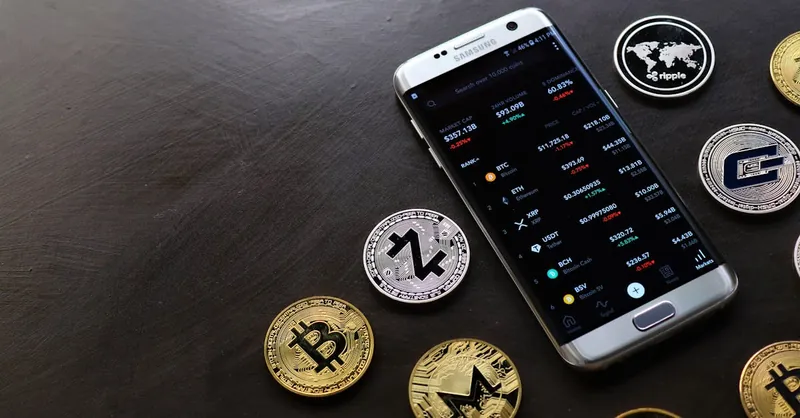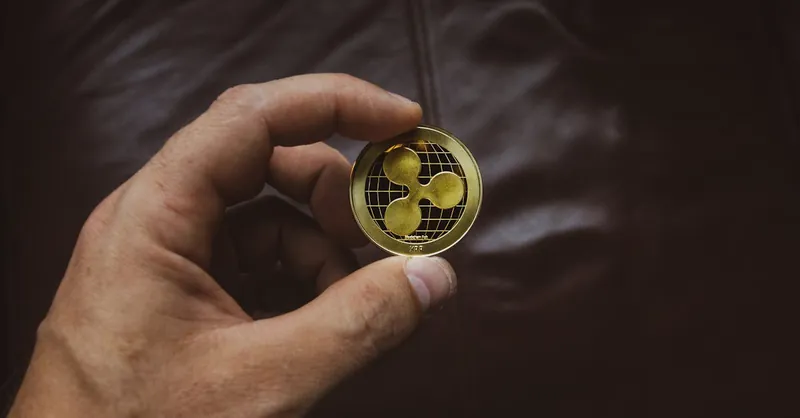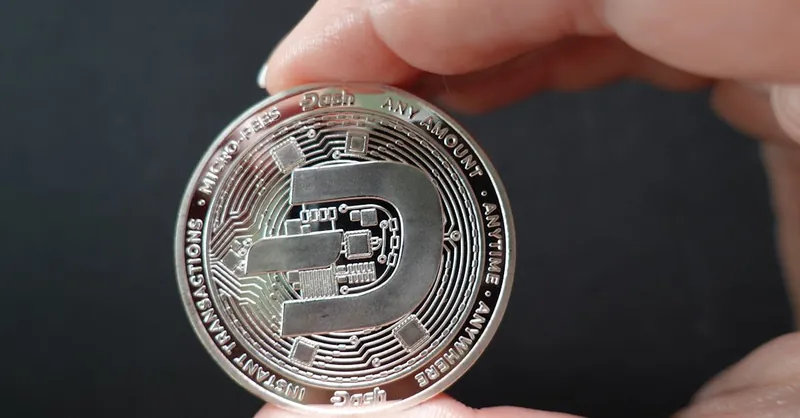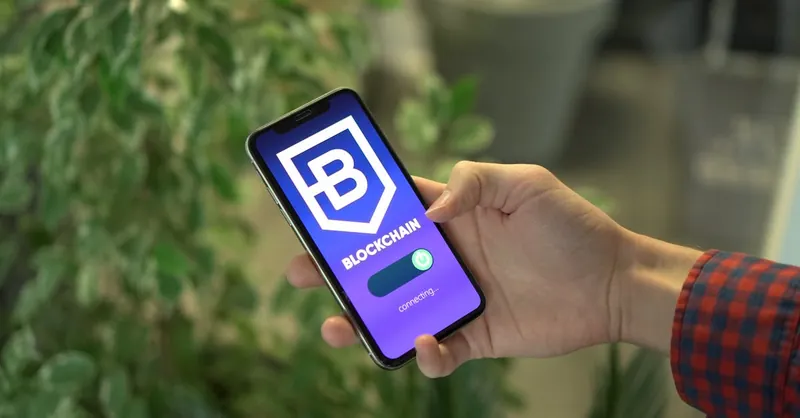How Do Crypto Airdrops Work? A Complete Guide for Investors
Category: Cryptocurrency
Unlocking the Mystery Behind Crypto Airdrops
If you're a crypto enthusiast or investor who has stumbled upon the term “crypto airdrops” and wondered exactly how they work and whether they’re worth your time, you’re in the right place. Whether you’re a novice just diving into the vibrant world of Bitcoin and altcoins or an experienced miner and market watcher seeking to uncover new opportunities, understanding crypto airdrops can unlock potential value and exclusive tokens. You might have seen airdrops mentioned in forums, social media, or trading groups but felt overwhelmed by the technical jargon or skeptical about their legitimacy and strategic value. This post breaks down the entire process, from what qualifies you to receive an airdrop, to how projects execute them, to the benefits and risks involved. Unlike many generic explanations that skim over critical details, here you’ll find a structured, step-by-step overview that caters to all expertise levels and empowers you to spot genuine airdrops, maximize gains, and avoid pitfalls. Read on to discover what crypto airdrops really are, how they’re designed to reward holders and promote new projects, and why smart investors are increasingly paying attention to them as part of a diversified crypto strategy.
- Unlocking the Mystery Behind Crypto Airdrops
- What Are Crypto Airdrops? Definition and Purpose
- How Do Crypto Airdrops Work? A Step-by-Step Breakdown
- Eligibility Criteria: Who Can Receive Airdrops?
- Types of Crypto Airdrops and Their Distinctions
- The Role of Blockchain Technology in Facilitating Airdrops
- Benefits and Opportunities of Participating in Airdrops
- Risks and Challenges Associated with Airdrops: Stay Safe and Informed
- How to Stay Updated and Identify Legitimate Airdrops
- Claiming Your Airdrops: A Practical Guide
- Future Trends: How Airdrops Are Evolving in the Crypto Market
What Are Crypto Airdrops? Definition and Purpose
Crypto airdrops are a marketing and distribution strategy where blockchain projects send free tokens or coins directly to the wallets of existing or potential users. The primary goal is to raise awareness, incentivize engagement, or reward loyalty within a decentralized community. Unlike traditional financial giveaways, airdrops typically require no upfront payment — making them an appealing way to obtain new or experimental cryptocurrencies without risk.
Projects use airdrops for various strategic purposes, including:
- Promoting a new token launch to stimulate interest and increase network effect.
- Rewarding early adopters or loyal holders who support a project over time.
- Encouraging decentralization by dispersing tokens broadly instead of concentrating ownership.
- Driving user acquisition and participation in governance, staking, or platform use.
Types of Crypto Airdrops
Understanding the different types of airdrops can help you identify opportunities and prepare accordingly. The most common variations include:
-
Standard Airdrops
Tokens are distributed to anyone who signs up or completes simple tasks like sharing on social media or joining a mailing list. -
Bounty Airdrops
Participants earn tokens by completing specific promotional actions such as writing articles, creating videos, or translating content. -
Holder-Based Airdrops
Tokens are automatically distributed to holders of an existing cryptocurrency, often in proportion to how much they own. This rewards loyalty and encourages holding rather than selling. -
Exclusive Airdrops
Given only to select users — such as early investors, community leaders, or verified users — to foster exclusivity or reward support. -
Hard Fork and Snapshot Airdrops
When a blockchain splits or records a "snapshot" of wallet balances at a specific time, new tokens may be distributed based on those holdings.
By grasping how these different airdrop models work, you can better anticipate eligibility criteria and position yourself to benefit from upcoming crypto launches or community incentives.

Image courtesy of Rūdolfs Klintsons
How Do Crypto Airdrops Work? A Step-by-Step Breakdown
Understanding the typical process of crypto airdrops is key to recognizing genuine opportunities and optimizing your chance to receive free tokens. Although the specifics can vary between projects, most airdrops follow a structured sequence that includes project announcements, eligibility verification, snapshot dates, token distribution, and claiming mechanisms. Here’s a detailed step-by-step breakdown:
-
Project Announcement and Airdrop Details
Blockchain projects usually announce an upcoming airdrop well in advance through official channels such as their website, social media, Telegram groups, or crypto news outlets. This announcement outlines important details including the airdrop’s purpose, eligibility criteria, timeline, and instructions on how to participate or qualify. -
Eligibility Criteria and Whitelisting
Many airdrops require users to meet specific eligibility conditions such as holding a particular token by a certain date, completing social tasks, or registering on a platform (whitelisting). Some may ask users to link their wallets or provide a valid email address to confirm participation. -
Snapshot Date
A critical step in many airdrops is the snapshot, where the project takes a precise record of wallet balances or blockchain state at a specific block height or timestamp. Only wallets holding the qualifying tokens during this snapshot are eligible to receive the airdropped tokens—this is especially common in holder-based and fork airdrops. -
Token Distribution
After validating eligibility and confirming snapshot data, projects distribute the airdropped tokens, either automatically or manually. This distribution may be on the Ethereum blockchain (via ERC-20 tokens), Binance Smart Chain, or other platforms depending on the project’s network. -
Claiming Mechanism
Some airdrops send tokens directly to qualifying wallets with no action required from users. Others require recipients to claim their tokens by interacting with a smart contract, connecting their wallet to a designated site, or completing additional verification. Always follow official instructions carefully to avoid scams.
By familiarizing yourself with these stages, you can better track and prepare for valuable airdrops. Staying engaged with official project channels and maintaining wallet security enables you to seize opportunities promptly and increase your chances of receiving free tokens in the highly dynamic crypto space.

Image courtesy of Roger Brown
Eligibility Criteria: Who Can Receive Airdrops?
One of the most important aspects of crypto airdrops is understanding who qualifies to receive these free tokens. Eligibility criteria vary widely depending on the project’s goals, but several common requirements often come into play. Knowing these prerequisites helps you position yourself strategically to maximize your chances of participation and rewards.
Common Eligibility Requirements
-
Wallet Holdings
Many airdrops target holders of specific cryptocurrencies or tokens. For example, a new project may distribute tokens only to users holding Bitcoin, Ethereum, or a particular altcoin by the snapshot date. The amount held can also influence the airdrop size, with larger balances often rewarded proportionally. This approach encourages long-term holding and loyalty among investors. -
Past Transactions and Activity
Some projects filter eligibility based on transaction history to reward active users rather than dormant wallet addresses. This could include criteria such as making trades on a decentralized exchange, providing liquidity, or interacting with smart contracts within a certain timeframe. This helps projects attract genuinely engaged participants who will contribute to the ecosystem’s growth. -
Community Participation
Engaging in community channels like Telegram groups, Discord servers, or forums might be necessary to qualify. Projects sometimes require joining official communities or contributing through discussions, feedback, or beta testing to build a vibrant network of early supporters. -
Know Your Customer (KYC) Compliance
Increasingly, especially with regulatory scrutiny, some airdrops mandate KYC verification to ensure compliance with legal frameworks. This means users must submit identity documents or pass verification checks before receiving tokens, which adds a layer of security but may reduce anonymity and ease of access. -
Social Media Engagement
Particularly for marketing-focused or bounty-based airdrops, proven activity on social platforms like Twitter, Facebook, or Instagram is often required. Tasks may include liking, sharing, retweeting project announcements, or tagging friends to amplify visibility.
By fulfilling these eligibility conditions, participants stand a better chance of receiving airdrops not only automatically but also through exclusive access or enhanced allocations. Staying informed about new requirements and actively maintaining wallet balances and community involvement is key to capitalizing on the lucrative world of crypto airdrops.

Image courtesy of Roger Brown
Types of Crypto Airdrops and Their Distinctions
Crypto airdrops are not one-size-fits-all; different formats serve diverse strategic purposes and offer unique mechanisms for distribution. Understanding the key types of crypto airdrops helps you identify which opportunities align best with your portfolio and engagement style. Here are the most prevalent airdrop formats and what sets them apart:
1. Promotional Airdrops
These are the most common and straightforward airdrops designed to create buzz around a new token or project launch. Promotional airdrops typically require minimal effort—often just signing up, joining a community, or completing simple social media tasks. Their primary goal is to drive user adoption and marketing reach by distributing tokens widely and quickly. Although the tokens may start with low value, early participation in promotional airdrops can lead to substantial gains if the project succeeds.
2. Fork Airdrops
Fork airdrops emerge from blockchain splits or “forks,” where a new blockchain is created based on the existing state of another chain. Wallet holders on the original chain at the time of the fork automatically receive equivalent tokens on the new chain. For example, Bitcoin holders during the Bitcoin Cash fork received BCH tokens proportional to their BTC balance. Fork airdrops reward existing holders and foster ecosystem diversification by cloning assets on new platforms.
3. Exclusive Airdrops
Targeting a select group, exclusive airdrops reward early investors, platform users, or community leaders with tokens not available to the general public. Eligibility is usually tied to specific criteria like prior participation in ICOs, membership in governance forums, or performance in bounty campaigns. These airdrops help build loyalty and incentivize continued engagement from top-tier users or influencers critical to a project’s growth.
4. Retroactive Reward Airdrops
In this model, projects distribute tokens as a reward for past activity, often rewarding users who demonstrated early support or significant usage before the token economy was even launched. Retroactive airdrops can reward everything from previous transactions, liquidity provisions, to product testing. This form sends a strong incentive for organic growth and authentic community building, as tokens are earned based on real contributions rather than arbitrary sign-ups.
Why Knowing the Distinctions Matters
Each airdrop type comes with different eligibility rules, distribution mechanisms, and reward potentials. Aligning your strategies with these distinctions can help you:
- Focus on the right projects that suit your risk tolerance and involvement level.
- Prepare your wallets and wallets’ activity to maximize eligibility.
- Avoid wasting time on low-value or scammy giveaways.
Being aware of these diverse airdrop formats equips you with the knowledge to proactively spot upcoming opportunities, engage meaningfully, and capitalize on free token distributions across the evolving crypto landscape.

Image courtesy of Worldspectrum
The Role of Blockchain Technology in Facilitating Airdrops
Blockchain technology is the backbone that makes crypto airdrops not only possible but also fair, secure, and transparent. Unlike traditional giveaways, airdrops leverage the inherent features of blockchain—such as decentralization, immutability, and programmability—to ensure tokens are distributed exactly as intended without intermediaries or manipulation.
Smart Contracts: Automating Trustless Distribution
At the heart of many airdrops are smart contracts, self-executing programs deployed on blockchains like Ethereum or Binance Smart Chain. These contracts automatically enforce the rules set by the project for token distribution, such as eligibility criteria, allocation amounts, and timing. Because smart contracts are transparent and immutable once deployed, they guarantee:
- Accurate distribution according to pre-defined parameters without human error or bias.
- Trustless execution, meaning participants do not need to rely on a centralized entity to receive their tokens.
- Reduced risk of fraud or manipulation, since the contract's code and transactions are publicly verifiable on the blockchain.
This automation simplifies the distribution process, enabling projects to scale airdrops to thousands or millions of wallets efficiently.
Snapshots: Precise and Verifiable Eligibility Checks
A key element in many airdrop designs is the snapshot—a recorded state of blockchain data taken at a specific block height or timestamp. Snapshots capture wallet balances and transaction histories, ensuring that only those who qualified at the snapshot moment receive tokens. This mechanism allows for:
- Fairness in allocation, by freezing holdings or activity at a defined instant to prevent last-minute manipulation.
- Transparency, since anyone can independently verify snapshot data on the blockchain.
- Clear eligibility verification, which removes ambiguity around who qualifies for the airdrop.
Snapshots work hand-in-hand with smart contracts to create a rigorous, tamper-proof framework for holder-based airdrops, forked tokens, and retroactive rewards.
Decentralized Protocols: Enabling Community-Driven Distribution
Beyond individual project smart contracts, some airdrops leverage decentralized protocols that facilitate collaborative governance and token emissions. These protocols can:
- Empower community members to vote on airdrop parameters or distribution schedules through decentralized governance mechanisms.
- Use decentralized oracles and verifiable data feeds to dynamically update eligibility based on real-world or on-chain activity.
- Enable cross-chain airdrops by integrating bridges and interoperable standards, expanding token reach across multiple blockchain ecosystems.
This decentralized approach aligns airdrops with the core blockchain ethos: distributing power and rewards equitably among all participants without centralized gatekeepers.
By combining smart contracts, snapshots, and decentralized protocols, blockchain technology ensures airdrops are executed transparently and reliably. For crypto users and investors, understanding these underlying mechanisms is essential not only to trust the legitimacy of an airdrop but also to participate confidently in emerging token economies fueled by these innovative distribution strategies.

Image courtesy of Jonathan Borba
Benefits and Opportunities of Participating in Airdrops
Participating in crypto airdrops offers a wealth of benefits and opportunities that go beyond simply receiving free tokens. For both newcomers and seasoned investors, airdrops serve as a strategic entry point into emerging blockchain projects and innovative token economies. Here’s why engaging in airdrops can be a highly rewarding aspect of your overall crypto journey:
Potential Financial Gains
One of the most obvious advantages is the possibility of significant financial returns with zero initial investment. Since airdrops distribute tokens for free, any increase in the token’s market value translates directly into profit for recipients. Some early airdrop recipients have seen their holdings multiply in value as projects gain traction, go public on exchanges, or integrate into broader DeFi ecosystems. Even modest token allocations can turn lucrative, especially if you consistently participate in multiple vetted airdrops.
Early Access to New Tokens and Ecosystems
Airdrops often grant you early access to promising projects before their tokens are widely available on exchanges. This early entry can provide advantages including:
- Ability to influence governance decisions if the token includes voting rights.
- Access to staking or farming opportunities that offer additional rewards.
- Priority participation in platform features before general adoption.
By holding airdropped tokens early, you position yourself to benefit from the potential appreciation and utility of groundbreaking blockchain innovations.
Community Building and Networking
Airdrops encourage an active and engaged user base, fostering strong community connections around emerging projects. By participating, you become part of dedicated Telegram groups, Discord servers, or forums where developers, investors, and enthusiasts exchange insights, collaborate on growth strategies, and share real-time updates. This community involvement enhances your understanding of the project’s vision, boosts your crypto literacy, and can open doors to exclusive events or collaborations within the crypto space.
Portfolio Diversification with Minimal Risk
From an investment perspective, receiving tokens via airdrops offers a risk-free method to diversify your crypto portfolio. This diversification can buffer your holdings against price volatility in major cryptocurrencies like Bitcoin or Ethereum. Since airdrop tokens often represent different sectors—such as decentralized finance (DeFi), non-fungible tokens (NFTs), or blockchain infrastructure—they provide exposure to varied use cases and growth trajectories. Integrating airdropped assets into your portfolio helps balance risk while expanding your crypto footprint without the need for additional capital outlay.
By understanding these key benefits—financial gain, early project access, community integration, and portfolio diversification—you can better appreciate why smart investors increasingly leverage airdrops as part of a comprehensive crypto strategy. Staying proactive in identifying and qualifying for high-quality airdrops could translate into meaningful rewards, both tangible and educational, in the rapidly evolving digital asset ecosystem.

Image courtesy of Dash Cryptocurrency
Risks and Challenges Associated with Airdrops: Stay Safe and Informed
While crypto airdrops can offer exciting opportunities, they also come with several risks and challenges that every participant should understand to safeguard their assets and personal information. Awareness and caution are crucial to navigating the airdrop landscape without falling victim to scams, phishing, or unforeseen financial implications.
Common Risks in Crypto Airdrops
-
Scams and Fraudulent Airdrops
Because airdrops often promise free tokens, they attract malicious actors seeking to exploit eager users. Fake airdrops may lure participants into providing private keys, seed phrases, or personal data—leading to direct wallet theft or identity fraud. Always verify the legitimacy of the project through official sources and trusted community channels before engaging. -
Phishing Attempts
Many fraudulent airdrops use phishing websites or fake social media profiles mimicking genuine projects. These sites may request wallet connections or credentials under false pretenses. Connecting your wallet to an unknown smart contract can result in unauthorized access and loss of funds. Always double-check URLs, avoid clicking suspicious links, and never share your private keys. -
Token Devaluation and Illiquidity
Receiving airdropped tokens does not guarantee future value. Many airdrops distribute tokens that never gain market traction or become listed on exchanges. Tokens can suffer from high volatility, low liquidity, or dumping by early recipients, reducing potential gains. Evaluating the project’s fundamentals and community activity helps prevent chasing worthless tokens. -
Tax Implications
Depending on your jurisdiction, airdropped tokens may be considered taxable income at the time of receipt and/or when sold. Failure to report airdrop earnings can lead to penalties or legal issues. It’s essential to understand local tax laws regarding crypto income and maintain detailed records of all airdrop transactions.
How to Safeguard Yourself When Participating in Airdrops
-
Use a Separate Wallet
Keep a dedicated wallet for airdrops that doesn’t hold significant funds. This minimizes exposure if the airdrop turns out to be malicious. -
Verify Official Communication Channels
Rely solely on verified websites, Twitter accounts, and Telegram groups affiliated with the project. Avoid engaging with unsolicited messages or unknown sources. -
Never Share Private Keys or Seed Phrases
Legitimate airdrops never require sensitive personal credentials. Sharing this information results in immediate compromise. -
Research the Project Thoroughly
Review whitepapers, team backgrounds, and community feedback to assess project credibility before participation. -
Be Cautious When Connecting Wallets
Only connect wallets to trustworthy platforms; check smart contract addresses and request permissions scrutinously.
By recognizing these risks and employing prudent security practices, you can enjoy the benefits of crypto airdrops while minimizing potential downsides. Staying vigilant and informed is the best defense in the fast-paced and sometimes deceptive world of token giveaways.

Image courtesy of Gustavo Fring
How to Stay Updated and Identify Legitimate Airdrops
In the constantly evolving crypto ecosystem, staying informed about authentic airdrops is crucial to maximize your gains and avoid scams. With countless projects announcing giveaways, distinguishing legitimate airdrops from fraudulent schemes requires vigilance and the use of reliable resources.
Key Resources and Tools for Tracking Airdrops
-
Official Project Channels
Follow the official websites, verified Twitter accounts, Telegram groups, Discord servers, and Medium blogs of projects you trust. These channels provide the most accurate and timely announcements regarding upcoming airdrops, eligibility changes, and claiming instructions. -
Airdrop Aggregator Platforms
Dedicated websites like AirdropAlert, CoinMarketCap Airdrops, and Airdrops.io compile comprehensive and updated lists of active and upcoming airdrops. Using these platforms helps you discover vetted opportunities and cross-check details before participation. -
Crypto News and Community Forums
Engage with reputable crypto news outlets such as CoinDesk, The Block, and CryptoSlate, as well as community forums like Reddit’s r/CryptoCurrency and Bitcointalk. These sources often feature discussions about airdrop legitimacy, project developments, and user experiences. -
Wallet and Portfolio Trackers
Utilize tools such as Zerion, Zapper, or Etherscan’s token tracker to monitor incoming token distributions. These platforms can alert you when new tokens appear in your wallet, helping identify unannounced or retroactive airdrops.
Best Practices to Avoid Airdrop Scams
-
Verify Before Connecting Wallets: Always double-check that the airdrop’s claim site uses the correct URL and secure HTTPS protocol. Avoid interacting with smart contracts unless you confirm their authenticity through community feedback or official project documentation.
-
Never Share Private Keys or Seed Phrases: Legitimate airdrops will never request your private credentials. Providing this information is the primary way scammers gain control of your funds.
-
Use Separate Wallets for Airdrops: Isolate your main assets by using dedicated wallets for airdrop claims. This practice limits your exposure in case the airdrop turns out to be suspicious.
-
Stay Updated on Regulatory Developments: Some airdrops may require KYC or have legal constraints depending on jurisdiction. Keeping track of regulatory news ensures you comply with laws and avoid potential penalties.
By integrating these resources, tools, and best practices into your routine, you can efficiently track trustworthy airdrops and secure your position in promising blockchain projects. Proactive monitoring combined with careful due diligence is essential to benefit from crypto airdrops while minimizing risks in this dynamic environment.

Image courtesy of David McBee
Claiming Your Airdrops: A Practical Guide
Successfully claiming your crypto airdrops requires careful attention to detail and a step-by-step approach to ensure security and maximize your rewards. While some airdropped tokens are delivered automatically to your wallet, many projects require you to actively claim your tokens by interacting with a smart contract or completing verification steps. Here’s a practical, step-by-step guide to help you navigate the claiming process safely:
1. Set Up a Compatible Wallet
Before you can claim any airdropped tokens, confirm that your wallet supports the blockchain network and token standard of the airdrop (e.g., Ethereum ERC-20, Binance Smart Chain BEP-20). Popular wallets like MetaMask, Trust Wallet, or Ledger hardware wallets are widely compatible. Make sure your wallet holds the qualifying tokens at the snapshot date if applicable, and keep it ready for the claim.
2. Verify Official Claim Channels
Always use official project websites or verified social media links for the claiming process. Avoid third-party or unofficial websites to prevent phishing attacks. Confirm smart contract addresses and ensure the site uses HTTPS for a secure connection.
3. Connect Your Wallet Securely
When prompted, connect your wallet through the official claiming portal. Carefully review the permissions requested — avoid approving transactions that grant extensive control over your wallet. Your wallet may ask for a small transaction fee (gas fee) to process the claim, so ensure you have sufficient native tokens (ETH, BNB, etc.) for this.
4. Execute the Claim Transaction
Initiate the claim by confirming the transaction in your wallet. This will trigger the smart contract to transfer the airdropped tokens to your wallet address. Monitor your wallet for the incoming tokens by using blockchain explorers like Etherscan or BscScan to verify successful receipt.
5. Securely Store and Manage Your Tokens
Once your tokens have arrived, consider transferring them to cold storage or a hardware wallet if you plan long-term holding to enhance security. If you intend to trade or use them on decentralized platforms, double-check token contract authenticity before interaction to avoid counterfeit tokens.
By following these essential steps—from wallet setup to secure claim execution—you safeguard your crypto assets and ensure you benefit fully from legitimate airdrops. Staying vigilant during the claiming phase helps prevent scams and losses, making your airdrop experience both rewarding and secure.

Image courtesy of Morthy Jameson
Future Trends: How Airdrops Are Evolving in the Crypto Market
As the crypto ecosystem matures, crypto airdrops are continuously evolving, moving beyond simple token giveaways to more sophisticated and integrated forms that align closely with emerging blockchain innovations. Understanding these future trends is essential for investors and enthusiasts looking to stay ahead in the dynamic world of digital assets.
NFT Airdrops: Merging Digital Collectibles with Token Distributions
One of the most groundbreaking developments in airdrops is the rise of NFT (Non-Fungible Token) airdrops. Unlike traditional fungible tokens, NFT airdrops distribute unique digital assets—such as art, collectibles, or access passes—to users. These airdropped NFTs often serve multiple strategic purposes:
- Exclusive access or membership: Grant holders special privileges within platforms or communities.
- Proof of participation or loyalty: Symbolize early adopter status or milestone achievements.
- New revenue and engagement models: Enable secondary market trading, fostering active user economies.
NFT airdrops blend cultural value with tokenomics, helping projects build vibrant communities while incentivizing long-term engagement.
Governance Token Distributions: Empowering Decentralized Decision-Making
Another pivotal trend is the growing use of airdrops to distribute governance tokens that confer voting rights within decentralized autonomous organizations (DAOs) and DeFi protocols. Through these airdrops, projects:
- Encourage broader community participation in protocol upgrades and policy decisions.
- Decentralize control, preventing concentration of power among a few holders.
- Incentivize users to actively contribute to ecosystem development, aligning incentives with token holders’ governance responsibilities.
This shift highlights how airdrops are no longer just marketing tools but integral mechanisms in building decentralized, transparent, and community-driven ecosystems.
Airdrops in DeFi: Incentivizing Liquidity and Usage
DeFi platforms increasingly leverage airdrops to reward users who provide liquidity, stake assets, or engage with lending and yield farming services. These DeFi-focused airdrops aim to:
- Bootstrap liquidity pools by incentivizing participation through token rewards.
- Reward active users and early adopters who drive network growth.
- Promote cross-platform interoperability as tokens are airdropped across multiple DeFi protocols to encourage ecosystem synergy.
This integration of airdrops with DeFi activities underscores their critical role in fostering financial innovation and user-centric value creation within decentralized finance.
These emerging trends—NFT airdrops, governance token distributions, and DeFi incentive mechanisms—demonstrate how airdrops are becoming more than free tokens. They have evolved into essential components of crypto ecosystems that drive user engagement, democratize control, and fuel innovation across blockchain technologies. Staying informed about these developments enables participants to capitalize on novel opportunities and actively shape the future of decentralized networks.

Image courtesy of Tima Miroshnichenko
